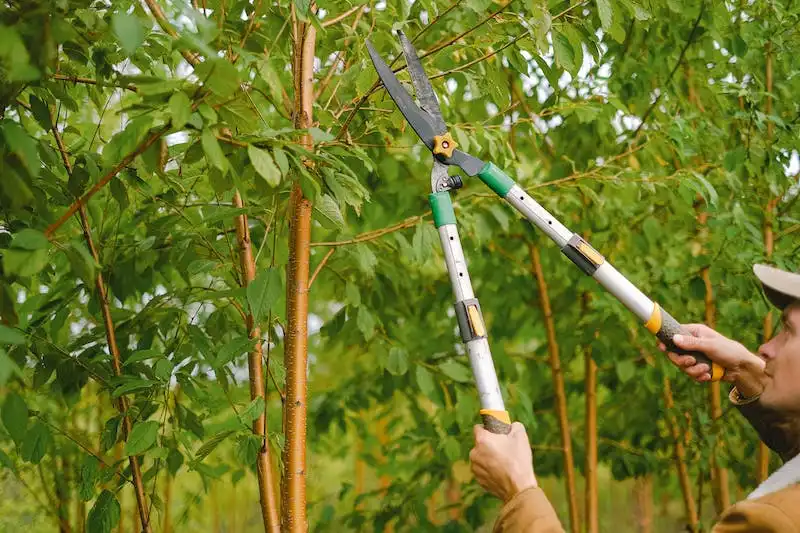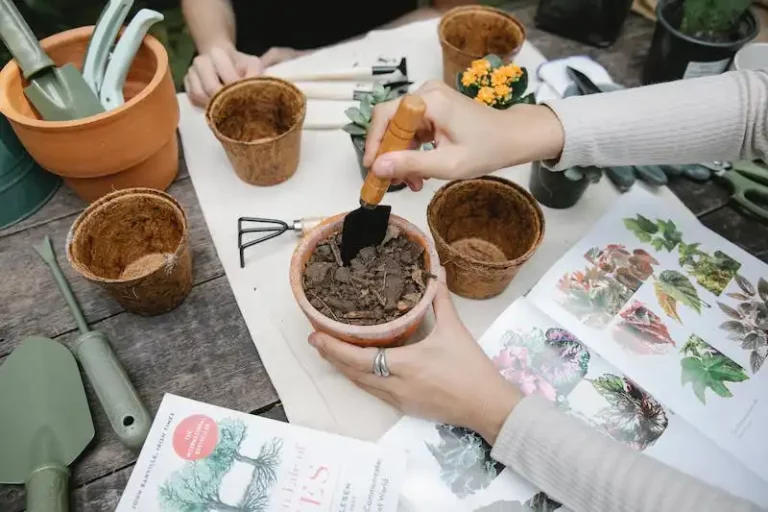Damping off is a common problem that affects many gardeners, particularly during the seed-starting season. This fungal disease causes the young seedlings to weaken at the base of their stems and eventually collapse and die. If you’ve ever experienced this frustrating setback, you know how devastating it can be to watch your hard work go to waste. But don’t worry, there are steps you can take to prevent damping off and ensure the survival of your seedlings.
One way to prevent damping off is to start with a clean and sterilized seed-starting medium. Damping off is caused by soil-borne fungi, so it’s important to use a medium that is free from these contaminants. You can either sanitize the medium by baking it in the oven at 180 degrees Fahrenheit (82 degrees Celsius) for 30 minutes or by using a commercial fungicide. Both methods will help kill any fungi that may be present in the medium.
Another important factor in preventing damping off is maintaining the right temperature and moisture levels for your seedlings. The fungi that cause damping off thrive in moist environments, so it’s important to avoid overwatering your seedlings. Make sure the seed-starting medium is slightly moist, but not overly wet. Additionally, keeping the temperature around 70 degrees Fahrenheit (21 degrees Celsius) during the day and slightly cooler at night can help prevent the growth of damping-off fungi.
When transplanting your seedlings outside, be mindful of the conditions they will be exposed to. Seedlings that have been started indoors are more susceptible to damping off, since they have been grown in a controlled environment. Gradually introduce them to the outside by hardening them off for a week or so before planting them in the garden. This will allow them to acclimate to the fluctuations in temperature and reduce the risk of damping off.
Lastly, there are a few additional tips to help you avoid damping off. Make sure to use clean and sanitized gardening tools, as they can also be a source of contamination. Avoid overhead watering, as this can create a damp environment that is conducive to fungal growth. Consider using a raised seed-starting system, which allows for better drainage and airflow. And if you notice any symptoms of damping off, such as wilting, yellowing, or thinning of the stems, remove the affected seedlings immediately to prevent the spread of the disease.
By following these tips and taking preventive measures, you can increase the chances of your seedlings surviving and thriving. Don’t let damping off dampen your gardening enthusiasm! Take the necessary precautions and enjoy a successful seed-starting season.
How to Care for Seedlings and Preventing Damping Off
Seedlings are delicate and require proper care to ensure their survival. One common problem that growers often encounter is damping-off, a fungal disease that attacks seedlings and causes them to wilt and die. To prevent damping-off and keep your seedlings healthy, it is essential to understand what causes it and how to manage the conditions to avoid it.
Damping-off is typically caused by the fungi Rhizoctonia, Pythium, and Fusarium. These fungi thrive in moist and poorly drained conditions, making seedlings particularly susceptible. The disease can spread rapidly and affect all seedlings in a tray or pot, making it crucial to take preventive measures.
Here are some tips on how to prevent damping-off and care for your seedlings:
- Start with high-quality seeds: Using healthy and disease-free seeds is the first step to prevent damping-off. Make sure to purchase seeds from reputable sources and store them in a cool, dry place until needed.
- Use sterile soil: Damping-off fungi can survive in potting soil, so use sterilized soil or seed-starting mix to avoid introducing the disease to your seedlings.
- Provide proper drainage: Ensure that your pots or trays have adequate drainage holes to prevent water from pooling at the bottom. Good drainage helps maintain proper moisture levels and reduces the risk of damping-off.
- Avoid overwatering: Damping-off thrives in wet conditions, so be careful not to overwater your seedlings. Keep the soil moist but not waterlogged.
- Improve air circulation: Proper air circulation helps prevent excess moisture and creates an environment less favorable for fungal growth. Use a small fan to provide gentle airflow around your seedlings.
- Control humidity: High humidity encourages the development and spread of damping-off fungi. Use a dehumidifier or open windows to maintain optimal humidity levels for your seedlings.
- Manage temperature: Damping-off is more likely to occur in cooler temperatures, so keep your seedlings in a warmer area. Use a heating mat or place them near a heat source, like a radiator or a sunny window.
- Thin out seedlings: Overcrowded seedlings are more susceptible to damping-off. Thin them out by removing weaker ones, allowing the remaining seedlings to grow better and avoiding excessive moisture buildup.
- Practice careful transplanting: When transplanting seedlings into larger pots or the garden, handle them gently to avoid damaging their delicate roots. Transplant at the same depth as the seedling was growing to maintain stability.
- Use fungicide treatment: If you notice symptoms of damping-off, like yellow or brown spots on the stem or a fuzzy white mold, treat your seedlings with a fungicide spray to prevent further spread of the disease.
- Consider solarization: Solarization is a method of using the sun’s heat to kill soil pathogens. Clear a patch of soil outside and cover it with clear plastic for several weeks during hot weather. This helps prevent damping-off and other soil-borne diseases.
By following these tips and practicing good seedling care, you can prevent damping-off and ensure the healthy growth of your plants. Remember to always monitor your seedlings for any signs of disease and take immediate action in correcting the conditions to avoid further damage. With proper management and care, your seedlings will thrive and grow into strong, thriving plants.
How to Care for Your Seedlings
Proper care is essential for the health and survival of your seedlings. By following a few simple steps, you can ensure that your plants thrive and avoid common problems like damping off disease.
1. Watering: Watering your seedlings correctly is crucial. Too much water can cause root rot and damping off, while too little water can lead to wilting and weak plants. Water from below by placing the flats in a tray of water or use a spray bottle to water gently from overhead.
2. Drainage: Good drainage is important to prevent waterlogged soil and promote healthy root growth. Make sure your seedlings are planted in well-draining soil or use a soilless seed-starting mix. Adding perlite or vermiculite can also improve drainage.
3. Temperature: Maintain the correct temperature for your seedlings. Most vegetable seeds germinate best between 65-75°F (18-24°C). Use a seedling heat mat or adjust the room temperature to create the ideal growing conditions.
4. Light: Seedlings need proper light to grow strong and healthy. Place them in a sunny window or use fluorescent lights to provide adequate illumination. Keep the lights about 2-3 inches above the seedlings and adjust the height as they grow.
5. Fertilizing: Once your seedlings have their first set of true leaves, you can start fertilizing with a water-soluble fertilizer. Follow the instructions on the package for the correct dilution ratio and frequency of application.
6. Pest and Disease Management: Keep an eye out for pests like snails and diseases like fusarium. Regularly inspect your seedlings for any signs of damage or decay. If you notice any issues, treat them immediately to prevent further spread.
7. Humidity: Seedlings require high humidity to thrive. Prepare a humidity dome or cover the flats with clear plastic to retain moisture. Make sure to remove the cover once the seedlings start growing to avoid excessive moisture buildup.
By following these steps, you can ensure that your seedlings have the best chance of survival and produce healthy plants for your vegetable garden. Proper care and attention are always the best ways to prevent damping off and other seedling problems.
Correcting Common Seedling Issues
When it comes to growing plants from seeds, many gardeners encounter common issues with their seedlings. These issues can be frustrating and potentially lead to the death of your plants. However, there are various corrective measures you can take to overcome these challenges and ensure your seedlings survive.
Damping-off is one of the most common issues that seedlings face. It is a fungal disease that attacks seedlings just as they germinate or soon after emergence. To protect your seedlings from damping-off, you can use a water-soluble fungicide to treat the soil before planting the seeds. This helps reduce the fungal activity in the soil and prevents the damping-off disease.
Another common issue is pests that can damage or kill young seedlings. To manage this problem, you have the option to use natural pest control methods or chemical pesticides. Natural options include introducing beneficial insects or using organic insecticides. Chemical pesticides should be used as a last resort and only when necessary, as they can harm the environment and beneficial insects.
Improper watering is another cause for concern when it comes to seedling health. Overwatering can lead to root rot, while underwatering can cause seedling wilting. It is important to find the right balance and keep the soil evenly moist, but not waterlogged. Water the seedlings from below by placing them in a tray of shallow water until the soil has absorbed enough moisture.
In addition to these common issues, seedlings may also suffer from mold or poor germination. Mold can appear on the soil surface or on the seedlings themselves. To prevent mold growth, make sure your seed starting mix is sterile and provide good air circulation. Poor germination can occur if the seeds are old or have been damaged. Always use fresh, high-quality seeds and follow proper storage techniques to ensure good germination rates.
Lastly, temperature and light levels can greatly affect seedling health. Some seeds require warmth to germinate while others need cooler temperatures. Understanding the specific requirements of your seeds will help you provide the right conditions for germination. Adequate lighting is also crucial for healthy seedling growth. If you are starting seedlings indoors, make sure they have access to sufficient light or use grow lights to supplement natural light.
In summary, correcting common seedling issues involves proper prevention and management techniques. By preparing the right conditions, preventing pests and diseases, and providing appropriate care, you can ensure your seedlings have the best chance of survival.




